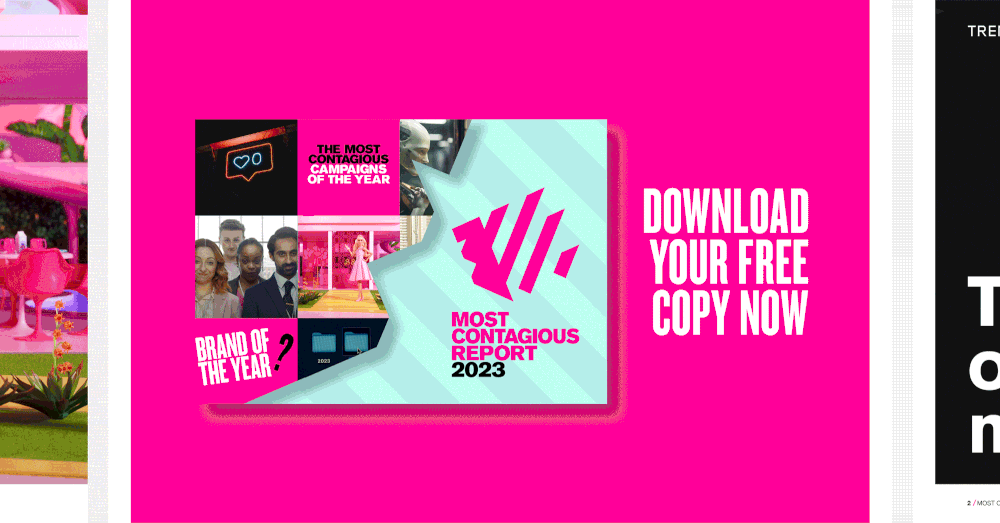Why creativity doesn’t pay /
Creative advertising agencies aren’t growing. Is their labour-based business model to blame and does productisation offer a better way?
James Swift
/
The chief executive of Publicis Groupe, Arthur Sadoun, told Campaign magazine in July that creative agencies are no longer ‘accretive to growth’. He was discussing his company’s second-quarter results at the time, and this was a diplomatic way of saying that the creative agencies were underperforming and would likely continue to do so.
Interpublic Group’s third-quarter results told a similar story. There, the division that houses creative agencies such as McCann, MullenLowe and FCB, was down 4.1% year on year, while the other segments all managed to grow at least a little.
In fact, it’s a fair generalisation that across the industry right now, it’s the media, data and specialist agencies that are driving growth while the creative shops stagnate or decline.
For the most part, holding companies have blamed the poor performance of their creative agencies on the less-than-ideal economic conditions, and the belt-tightening among tech sector clients, in particular. Those are both real impediments, but there is also another narrative taking hold.
In June, agency consultant Michael Farmer’s book, Madison Avenue Makeover, came out. It charts Huge CEO Mat Baxter’s attempt to rescue the digital agency by ditching the standard fee structure and repackaging its services as fixed-price products that promise to help clients grow. Farmer’s book revived the debate over business models and the years of declining fees, working conditions and corporate status that creative agencies have endured. In that context, their recent sluggish financial performance was just a symptom of a deeper problem.
There’s no question that creative agencies are still fundamental to the success of holding companies. Sadoun said in that same interview with Campaign that creativity is still at the centre of Publicis’ business model. But then why does the industry still struggle to make money out of what is supposed to be its core competence, and has Huge found a better way?
Model failure /
It bears repeating that the creative agency business model was broken from the start.
For most of the 20th century, agencies charged a 15% commission to buy media for clients, and they threw in creative and planning services as perks. Then when media and creative departments split into separate agencies towards the end of the 1980s, the creative agencies adopted a fee structure based on the number of hours it took to do the work.
Separating creative and media was a mistake, says Rory Sutherland, vice chairman of Ogilvy UK, but creative agencies compounded the blunder. First, they missed the opportunity of being untethered from media departments to branch out into other kinds of creativity beyond ads. Second, by adopting the billable hour they ‘basically inherited the consulting model without the advantage that consultants have’, says Sutherland, ‘which is that you basically go and sell the same fucking deck to seven people with just the logos changed.’
There were other problems with the business model. Not least, says Sutherland, because ‘the most valuable thing that creative agencies do has absolutely nothing to do with time’. Constrained by the billable hour, creative agencies grew deformed, hiring more account handlers and support staff to deal with all the admin, and dumping senior talent who were too expensive and worked too fast.
Fresh pitch /
A few agencies have tried to do things differently. Anomaly, for instance, doesn’t use timesheets and instead charges for performance or takes an equity stake as payment. But by and large the advertising industry has never really wavered from the billable hour.
‘I’ve been consulting to the industry for 30 years,’ says Farmer, ‘and despite all the problems in the industry, I had never run into a CEO, who said, “Oh, my God, this is terrible, we have to do something about it.”’
So when Mat Baxter contacted Farmer and asked if he would like to document the transformation at Huge, Farmer didn’t need to think long. ‘I probably would have paid to do that project,’ he says.
Baxter, who is described in Farmer’s book as a driven and unconventional character, was parachuted into Huge by Interpublic Group in 2021. Until that point, Baxter had only run media agencies, and his assessment was that creative agencies had become commoditised service providers. Working with the existing management team, Baxter devised a new strategy to increase Huge’s sales significantly over the next three years by transforming it from a digital creative agency into a growth acceleration company dedicated to improving clients’ results, and selling fixed-priced products instead of charging fees.
Caroline Johnson, The Business Model Company
The product structure worked like this. When clients engaged Huge they would encounter three offerings, or ‘doorways’: experience transformation, technology realisation and growth creation. Doorway selected, clients would then pick from three ‘performance challenges’. For instance, within the growth creation doorway, clients could choose to ‘identify and deliver products to new, high-value customers and markets’. From there, Huge offered five ‘drawers’, each representing a step in the process of the work, such as ‘develop a framework’ or ‘drive results’. (Incidentally, the term ‘drawer’ was later abandoned at Huge.)
This model not only gave Huge control of its profit margins, it changed the agency’s entire proposition.
‘That’s going from “we’re all about creativity” to “we’re all about fixing client performance problems”,’ says Farmer. ‘And that’s a new theory of what an advertising agency is.’
Changing neighbourhoods /
The advantage of productisation, says Caroline Johnson, co-founder of The Business Model Company and architect of Huge’s pricing strategy, is that it places value on outcomes rather than effort.
Focusing on effort has led the advertising industry into what Johnson calls a ‘goodwill service model’, where agencies give away ideas in pitches and say yes to every client demand because they think it will make them more popular with clients.
‘That has caused a complete crisis in our industry,’ says Johnson. ‘The burnout rate of our talent, the lack of respect that we have commercially as an industry; there are so many really obvious symptoms to the problems of being on the wrong model.’
Successfully switching from a model that rewards effort to one that rewards value requires total commitment on the part of the agency. Half measures are no use. Clients simply won’t buy into it if they think they’re being charged more for the same thing.
Johnson likens a superficial attempt at productisation to an all-you-can-eat buffet that suddenly starts to charge more for the best food. ‘Do you think [clients are] going to pay extra for the prosecco and the smoked salmon, when everyone else has it on the all-you-can-eat buffet? Of course they’re not.’
Procurement departments also don’t know what to do with hybrid agencies. ‘What procurement people want when choosing an agency is to some extent ease of comparisons,’ says Sutherland. ‘If you’re the only agency that charges differently, you effectively make it impossible for you to get your prices to be compared objectively, so you’re kind of discounted.’
That’s why, says Sutherland, ‘it’s very difficult to change a pricing model in a B2B environment when it’s become kind of enshrined’.
But those agencies that successfully manage to — as Johnson likes to call it — ‘change neighbourhoods’ can command a different kind of price. ‘It’s really common when repackaging services into products or programmes to go from achieving a 13% net margin to a 33% net margin,’ says Johnson, who adds that revenue per head, which, in the UK, tends to cap out at £100,000 in the creative agencies, can rise to £300,000.
Of course, it’s not all champagne and cartwheels in the land of productisation. Blair Enns, founder of a coaching organisation Win Without Pitching and author of two books on pricing for creatives, tells Contagious that productisation can be ‘part of the solution to the monetisation problem’ and thinks agencies should consider it. But he also says the model presents challenges, ‘such as the tendency to price the product instead of pricing the client, or the fact that sellers of productised services have a harder time focusing on value when they have an actual product they want to sell’.
Cut to the quick /
It has only been about 18 months since Huge restructured and that’s not enough time to know whether it has been a success. All we know so far about Huge’s performance is that Interpublic Group’s CEO, Philippe Krakowsky, said in an earnings call in October that it was among a group of digital specialty agencies that had produced ‘challenged results’.
But the argument for reforming creative agencies should not turn on what happens at Huge. ‘Clients are not growing, clients fire agencies every three years, clients pay agencies very little and those fees are in decline, and agencies don’t pay their people very well,’ says Farmer. ‘That isn’t a very strong argument for what agencies are doing is successful.’
Productisation may or may not be the answer, but agencies will need to find some way to charge for the value they create, rather than the effort they put in, if they want to be taken seriously by clients and make enough to pay their talent properly. And that need is only going to become more acute as AI tools become more proficient.
‘The business model of the holding companies to a very considerable extent is to get paid for bodies,’ says Farmer. ‘And I have seen enough AI to know that a lot of those bodies are going to be replaced.
‘Even if you assume that the digital and social scopes of work represent 40% of the total workload of an agency these days, how much of that is vulnerable to AI? I’d say half of it. So maybe 20% of a typical creative agency workload could be replaced by AI. Well, that’s 20% of the people, not counting [support staff]. There isn’t a holding company that can survive that big a change.’
Want to read more articles like this? Then Download the 2023 Most Contagious Report /

The Most Contagious Report is packed with marketing trends, campaign analyses, strategy interviews, opinions, research and even a smattering of geopolitics and culture. It’ll give you almost everything you need to hit the ground running in 2024. And it’s free (if you don’t put an inflated sense of worth on your work contact details, that is).
Want more of the same? /
We don’t just write about best-in-class campaigns, interviews and trends. Our Members also receive access to briefings, online training, webinars, live events and much more.







